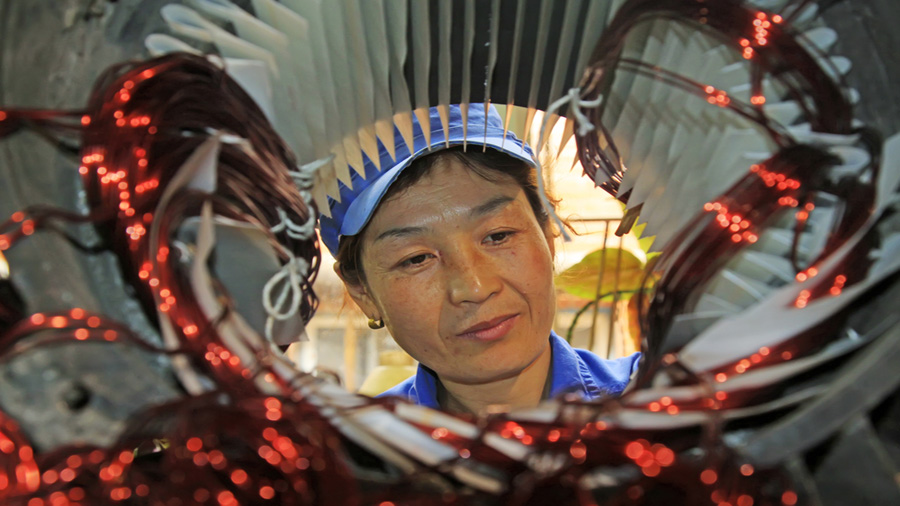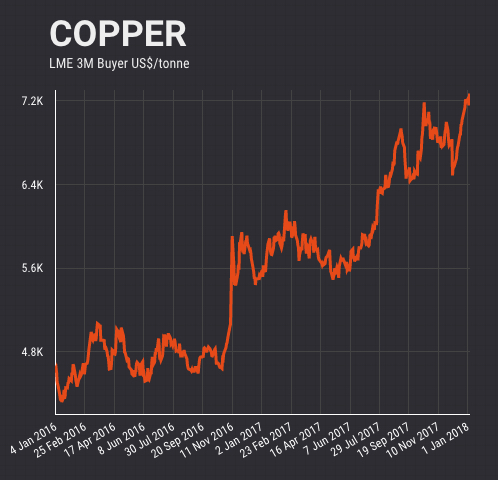
Investors jumped back into copper on Thursday after reports that top consumer China is slashing import quotas of scrap metal, a bullish development first rumoured last year.
After pulling back over the first three trading days of the year, Comex copper bounced back to just below $3.30 a pound ($7,270 per tonne) in New York, up over 1% from Wednesday’s settlement. While gains were pared by early afternoon volumes were heavy, especially considering not all market participants have returned from year-end holidays, with more than 100,000 lots worth some $8.4 billion traded.
Metalbulletin reports that Beijing cut its quota for the first two batches of 2018 copper scrap imports to 136kt, down a whopping 94.3% compared to 2017. The market data provider said not only were far fewer refiners applying for licences, but those that did saw allocations drop more than 80% below last year’s levels.

Another indication of tight supply came earlier this week after China’s copper smelters lowered their treatment and refining charges
Another indication of tight supply came earlier this week after China’s copper smelters lowered their treatment and refining charges (TC/RCs) in the first quarter of 2018 by 8.4%. The 10-member China Smelters Purchase Team (CSPT) set the minimum level for treatment fees at $87 per tonne. Earlier China’s Tongling Nonferrous Metals Group had agreed with number one listed copper producer Freeport-McMoRan to set the 2018 benchmark at $82.25 per tonne, an 11% drop from the 2017 benchmarks.
TC/RCs paid by mining companies to smelters to turn concentrate into metal are a good indication of conditions in the spot market.
Copper gained 30% in 2017 as it continues to recover from six-year lows struck early last year and expectations are for a positive if more modest performance next year. Measured from its multi-year lows struck at the beginning of 2016, copper has gained more than 70% in value.
The red metal’s run started on hopes (since dashed) of massive infrastructure investment in the US following the presidential election, but strikes in Q1, which at one point saw nearly a tenth of global production go offline, really set the tone for the year. By mid-year the rally was flagging, but talk of a Chinese ban on scrap imports saw the price take off again.
It’s not just supply side issues – especially at mine level – that’s boosting copper’s prospects.
Demand from China is holding up with the country’s refined copper production in November jumping nearly 10% from the same time last year to 786,000 tonnes, the highest rate in at least three years data from the National Bureau of Statistics showed in December as smelters make the most of higher copper prices.
For the January – November period this year production is up 6.8% and 2017 should comfortably outpace last year’s total of 8.44m tonnes of refined copper production.
China’s smelters working at capacity helps to explain the decline in imports of refined metal and still growing concentrate imports.
Shipments of copper concentrate increased from last year to total 1.78m tonnes in November, a new monthly record and up nearly 30% from October’s disappointing figure. Year to date Chinese concentrate imports are up moderately from last year’s record 17m tonnes.
Refined copper imports are trending down with recently released data showing cargoes are down some 5% over the first 11 months of 2017 to 4.24m tonnes compared to the same period in 2016. Full year imports in 2016 hit a record 4.94m tonnes.